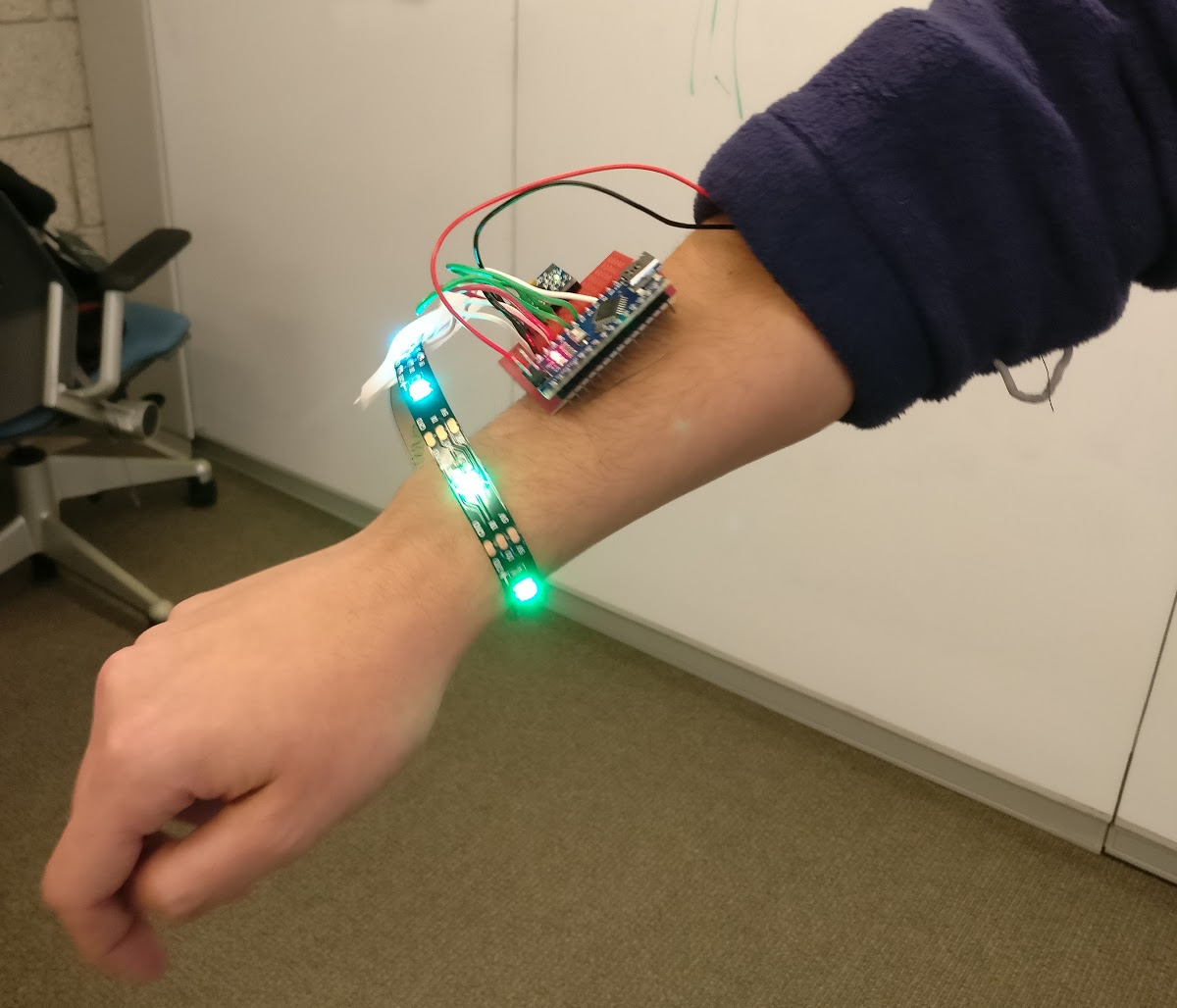
In this activity students design a multicolor LED bracelet that responds to their movement. They learn about color theory, light, and even kinematics and vectors. Depending on how advanced they are, one can discuss trigonometry, even series expansions.
The students have complete freedom over what the response of the bracelet should be to different kinds of movement. They are given a wide range of examples, from the color of the bracelet responding to the direction in which they are moving to various colors moving and mixing as the students spin.
One of the provided sketches can be used for a standalone demonstration of the motion sensor (together with the "serial plotter" tool in the Arduino IDE). The three lines on the plot correspond to the accelerations measured along the three axes of the sensor. By tapping on the table we can observe fast vertical oscillations. By rotating the sensor we can observe the changing orientation in Earth's gravitational field.
The LED strip can be used independently of the sensor to demonstrate color mixing.